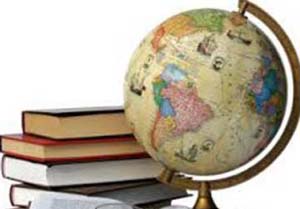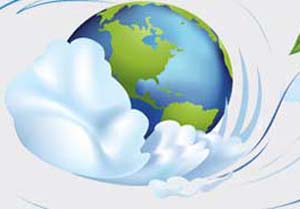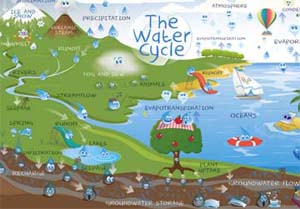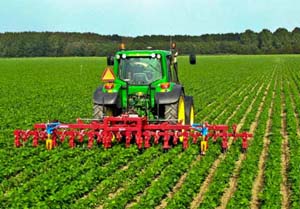 |
|
| Appunti superiori |
|
 |
|
| Appunti superiori |
|
| Visite: 1930 | Gradito: |
Leggi anche appunti:VulcanologiaVULCANOLOGIA ERUZIONI Un' eruzione può essere di tipo: CENTRALE: Elementi di GeodesiaElementi di Geodesia La Geodesia è la disciplina che studia la forma e le MalaysiaMalaysia o Malesia, Stato federale (Persekutuan Tanah Malaysia) dell'Asia |
 |
 |
CANADA , AUSTRALIA, NEW ZEALAND
CANADA
People: Canada has one of the lo west population densities in the world, nearly half of them are of British origin, and only about 25 per cent are of French origin. The French Canadians are the descendants of the people who were living in British colonies and today mostly of them live in Quebec where they try to preserve their linguistic and cultural identity.
Indians and Inuit or Eskimos are Canada's native people, they represent only 1.5 per cent of the country's population, they came from Asia in prehistoric time.
In Canada the official languages are English and French and almost of a hundred languages are spoken throughout the country.
Politic: Canada is a Constitutional Monarchy and a Federal state. The Canadian federation is among the most decentralized in the world. The federal government decides matters of national interest, the provincial ones are responsible for specific areas, like heath and local services. The head of the state is the British monarch, who I represented by a governor general.
History: Canada is a young country, before the coming of the Europeans, it was populated by Indians and Inuit. When explorers like Cabot and Champlain from France were looking for a better route to the Far East, by chance they landed on the east coast of North America; they never found the passage to Asia they were looking for, but they found a new land where gradually British and French colonies were established during the 17th century.
Britain and France soon became rivals in Canada. After years of fighting, France was forced to cede all its territory to Britain by the Treaty of Paris of 1763. The French-speakers inhabitants, under British rules, were authorized to maintain their civil laws, language and religion.
Then in the second part of the 19th century, to prevent American expansion, Quebec, Ontario, New Brunswick and Nova Scotia formed a confederation called Canada in 1867, that gradually will expanded until the actually state. Canada took part in the two Worlds Wars in the side of Britain and the United States. Since then Canada has been an active member of the United Nations..
Territory: Canada is a land of infinite variety, the country is officially divided into ten provinces, two territories and four region:
v The North: is the country's largest geographical region; it is a great wilderness of mountains and tundra, enormous lakes and sub arctic bush land, inhabited by only 75,000 people. Most of the inhabitants are native peoples, and however there are increasing numbers of newcomers. The traditional activities of hunting, trapping and fishing are still an important part of the northern economy, but the modern development is directed towards the extraction of minerals and the exploitation of oil and gas.
v The West: is one of the great granaries of the world. Many of the settlers came from Europe, and so the region offers a great variety of languages and cultures. The region also has a great quantity of petroleum, natural gas and potash.
v Central Canada: contain Ontario and Quebec. Six out of every ten Canadians live in this two provinces that are also the centre of the industrial and financial activities of the country and have two large cities. Most of the territory of Central Canada is dominated by the Canadian Shield, rich in commercial forests, hydroelectric power and has large deposit of metallic minerals.
v Atlantic Canada: still relies on the primary industries of fishing, forestry, mining and agriculture. Fishing is the oldest activity here. The region has been little affected by modern immigration.
AUSTRALIA
Territory: Australia is situated just south of the equator, it is bounded by the Pacific Ocean. It is in equal size to the United States without Alaska. It is the smallest continent and the largest island in the world. Most of the country is a vast plane, the central and western part of it consists of desert and semi desert lands. Off the north-eastern coast lies the Great Barrier Reef (the largest mass of coral in the world) and off the south-eastern coast there is the island of Tasmania. Its flora and fauna are so different from other continent, the bests now are the trees of eucalyptus in the rainforests, the kangaroo, the koalas, the Tasmanian devil and the emus.
People: It is one of the most scarcely populated countries in the world. Only 1.5 per cent of the total population descend from the original inhabitants, most of them live in town and rural areas. They only became full Australian citizens n 1967, after a referendum; still today the Aborigines are treated as second-class citizens: 80 per cent of them are unemployed, only one per cent of them completes the education, they integration into Australian society does not look probable. In 1990 the government set up a commission to take steps to preserve their culture and their standard of living.
Politic: Australia is a Federation of six states and two territories; the head of state is the British monarch, who is represented by a governor general. Australia is a member of the Commonwealth. The federal government is responsible for matters of national interest, while each of the six states has its own government witch operates in local areas.
History: The first inhabitants of Australia were the
Aborigines people, who are believed to have migrated from Asia. European
discovery began only in the 17th century, it was Captain James Cook
of the British Navy who landed near Sidney in
Contrasts: Most of Australian live in the capital cities, and half of them live in Sydney and Melbourne. Sydney (1788) is the capital of New South Wales, it is the largest and oldest city in Australia; its traditional rival is Melbourne, the capital of the state of Victoria, it is the second largest city and one of the few to be founded as a free settlement. The national capital of Australia is Canberra, situated in what is called Australian Capital Territory, it was founded in 1911 and planned as a model city.
NEW ZEALAND
Territory: New Zealand lies in the South Pacific Ocean and the Tasman Sea separates it from Australia. It consists of two main islands: North Island and South Island, a third Stewart Island lies to the south of them. Mountain ranges and hilly country dominate New Zealand's landscape. One of the most striking physical features is the Southern Alps, this chain of spectacular mountains runs the full length of South Island, with the country's highest peak, Mount Cook. Fjords, glaciers, lakes and the coastal plains add to the variety of the scenery. In the North I. there are most of country's active volcanoes, hot springs and geysers also form part of the volcanic system, and in the middle of North I. there is Lake Taupo, New Zealand's largest lake. The season here are the opposite of the northern hemisphere.
People: However the economy depends heavily on agriculture, New Zealanders live in towns and cities. Three quarters of them live in the North I. because the milder climate. The capital city is Wellington, while the largest city is Auckland. Most of the population is of British origin, a little part are Maori and the rest come from different parts of the world. The government has recently recognised Maori as an official language and has introduced bilingual schools and Mari TV programmes.
Politic: New Zealand is a Constitutional Monarchy, the head of state is the British monarch, who is represented by a governor general. The New Zealand Parliament has only one chamber, the House of Representatives.
Economy: New Zealand is usually called "the world's biggest farm", in fact its economy depend only on a highly mechanized agriculture. Grassland farming is the most important activity, while meat and dairy products are the most valuable items produced on farms. New Zealand's main exports are beef and mutton, cheese and butter, fruit and wool. After the independence Britain was New Zealand's main trading partner. But after a severe economic crisis the country had to look for new markets. Today Australia, European Union and the US are important export markets.
History The history of this country began with the "Great Migration" in 1350, when the Maori, a Polynesian people, started to settle in the North Island of New Zealand. In 1769 the English explorer Captain James Cook landed and explorer the country. British settlers wanted to found here a model colony. Eventually the British government wanted to take possession of the country and with a treaty in 1840 all powers of sovereignty were ceded to the British Crown by the Maori chiefs, without the territorial rights and their tribes. In 1852 at New Zealand was given self-government and finally in 1907 became an independent dominion in the Commonwealth based on an agreement. In 1877 were introduced an Education Act which provide free education for everyone. Then in 1893 it became the first country in the world to give the vote to women.
 |
| Appunti su: |
|
| Appunti Meteorologia |  |
| Tesine Idrologia |  |
| Lezioni Agricoltura agraria |  |